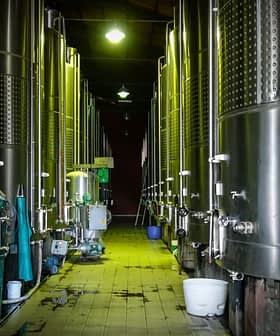European Farmers Ask E.U. Not to Cut Agricultural Spending from New Budget
The European Union’s agricultural sector faces a 10 percent funding cut over the next seven years if the budgetary agreement is ratified by the European Parliament, with Spain’s young farmers warning that the Common Agricultural Policy cuts could reach €40 billion ($47.5 billion) for the 2021 – 2027 period. The new CAP budget will be €344 billion ($408 billion), a decrease from the previous period’s €383 billion ($455 billion), with a 12.8 percent cut also expected for the rural development fund if the agreement is confirmed, sparking concerns among farming associations in various European countries.
Funding to the European Union’s agricultural sector is set to be cut by 10 percent in the next seven years, if the European Parliament ratifies the budgetary agreement recently reached by member states.
Spain’s association of young farmers (Asaja) has warned that, if confirmed by the Parliament, the Common Agricultural Policy (CAP) cuts will reach €40 billion ($47.5 billion) for the 2021 – 2027 period.
If we look at the guidelines set by the Commission, our sector will be called to take on new commitments in environmental sustainability and the protection of biodiversity. To match those, an adequate volume of resources for technological innovation and income support is needed.
In the previous 2014 – 2020 period, the CAP budget totaled €383 billion ($455 billion), while the new CAP will be lowered to €344 billion ($408 billion). For Spain alone, those cuts are worth more than €4.7 billion ($5.6 billion).
If this final agreement is confirmed by the European Parliament, a 12.8 percent cut will also be applied to the second pillar of the CAP, meaning the rural development fund (EAFRD) will fall to €78 billion ($92.5 billion).
See Also:Common Agricultural Policy UpdatesIn the newest version of CAP, the EAFRD will receive €7.5 billion ($8.9 billion) from the “Next Generation E.U.” stimulus plan (NGEU), which is far less than the €15 billion ($17.6 billion) initially proposed by the European Commission.
Additionally, €450 million ($533 million) will be used to establish a reserve fund, which is meant to stabilize the agricultural sector in case of a sudden crisis.
Asaja emphasized the relevance of the EAFRD fund, since it is considered key for rural areas to reach the goals of the European Farm to Fork and Green Deal initiatives.
Asaja also noted how decisive the efforts of farmers to keep the food chain going during the peak of the Covid-19 pandemic have been throughout Europe.
“The behavior of the Spanish and European agricultural companies and their partners has been an example and that should also be credited by those who decide [funding],” Asaja president Pedro Barato wrote.
The Italian farming association, Confagricoltura, also stressed the relevance of agriculture and asked Italian Members of the European Parliament (MEP) to lobby their colleagues for additional funds for the sector.
“Looking at the NGEU, the provided funds reach just the one percent of the package, a sum that is really too small for a sector whose importance has been recognized by all as strategic,” Confragricoltura president Massimiliano Giansanti said.
“If we look at the guidelines set by the Commission, our sector will be called to take on new commitments in environmental sustainability and the protection of biodiversity,” he added. “To match those, an adequate volume of resources for technological innovation and income support is needed.”
Irish farmers set a similar tone when they addressed the issue. Tim Cullinan, president of the Irish Farmers Association, called the cuts unacceptable.
“The European Union wants farmers to do more for the environment and biodiversity yet they will not back it up with the necessary funding,” Cullinan said. “We are particularly concerned about the allocation for direct payments in pillar one. The current proposal will not be sufficient to even sustain the basic payment scheme at the same level as 2020.”









